Texas Do Not Resuscitate Order (DNR) Form
An Out-of-Hospital Do-No-Resuscitate program allows the residents of the state of Texas to decide whether or not they want to receive CPR treatment during an emergency. If a patient has a signed and activated OOH-DNR form, they will not receive CPR by medical staff in any part of the state.
Build Your Document
Answer a few simple questions to make your document in minutes
Save and Print
Save progress and finish on any device, download and print anytime
Sign and Use
Your valid, lawyer-approved document is ready
The list of restricted measures includes:
- CPR (cardiopulmonary resuscitation)
- advanced airway treatment
- restarting the heart via electric shock
- artificial respiration
- external cardiac pacing
How Can a Person Obtain an OOH-DNR form in Texas?
Any Texas resident of legal age can obtain and activate an OOH-DNR form by downloading it from the Texas Department of Health Service website and filling it out according to the state’s legal regulations.
The form itself has the following requirements:
- It should be printed on the standard A4-size sheet of paper
- The paper should have information on both sides—the OOH-DNR form on the front side and the instructions on the backside
- A patient can copy the document or use an original form
- Copies of the document are deemed legal
Two administrative rules regulate the Texas OOH-DNR Program: Rule §157.25 and Chapter 166. To legally sign an OOH-DNR form in Texas, you will need a patient, a physician, two witnesses, or a second physician.
How to Let Medical Personnel Know That You Have an OOH-DNR Order?
Once you sign your OOH-DNR order, you can get an extra DNR identification device. This is optional, so you will have to pay for this.
There are two types of DNR ID devices:
- a plastic bracelet with the word “Texas” or the logo of the geographical shape of the state with the word “STOP” printed over it
- a metal bracelet with the phrase “Texas Do Not Resuscitate”
- a metal necklace with the same message
All three ID devices serve as substitutions for the printed OOH-DNR form and must be accepted by medical personnel as a legal DNR order showing that a patient exercises their right to reject certain treatment.
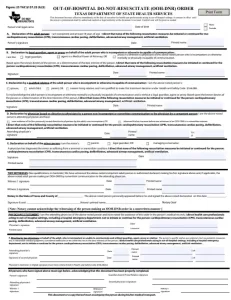
Filling Out the Texas OOH-DNR Order Form
Before proceeding with filling out the DNR form, you should know that it takes more than one person to fill it out properly: you as a patient and your attending physician. You will also need two witnesses for the task.
1. Provide Your Personal Information
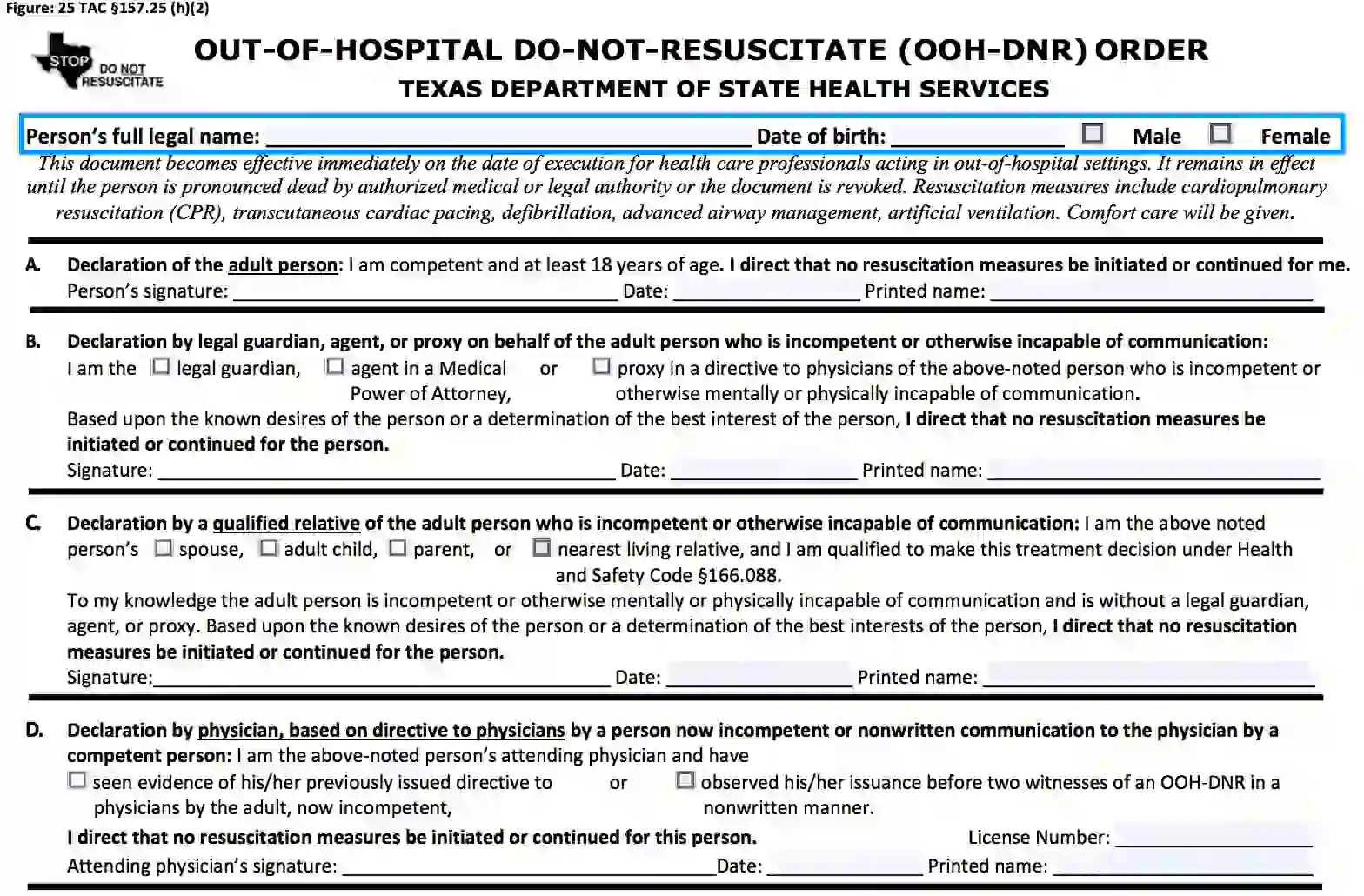
Write down your full name, your date of birth, and specify your gender.
2. Confirm a Declaration
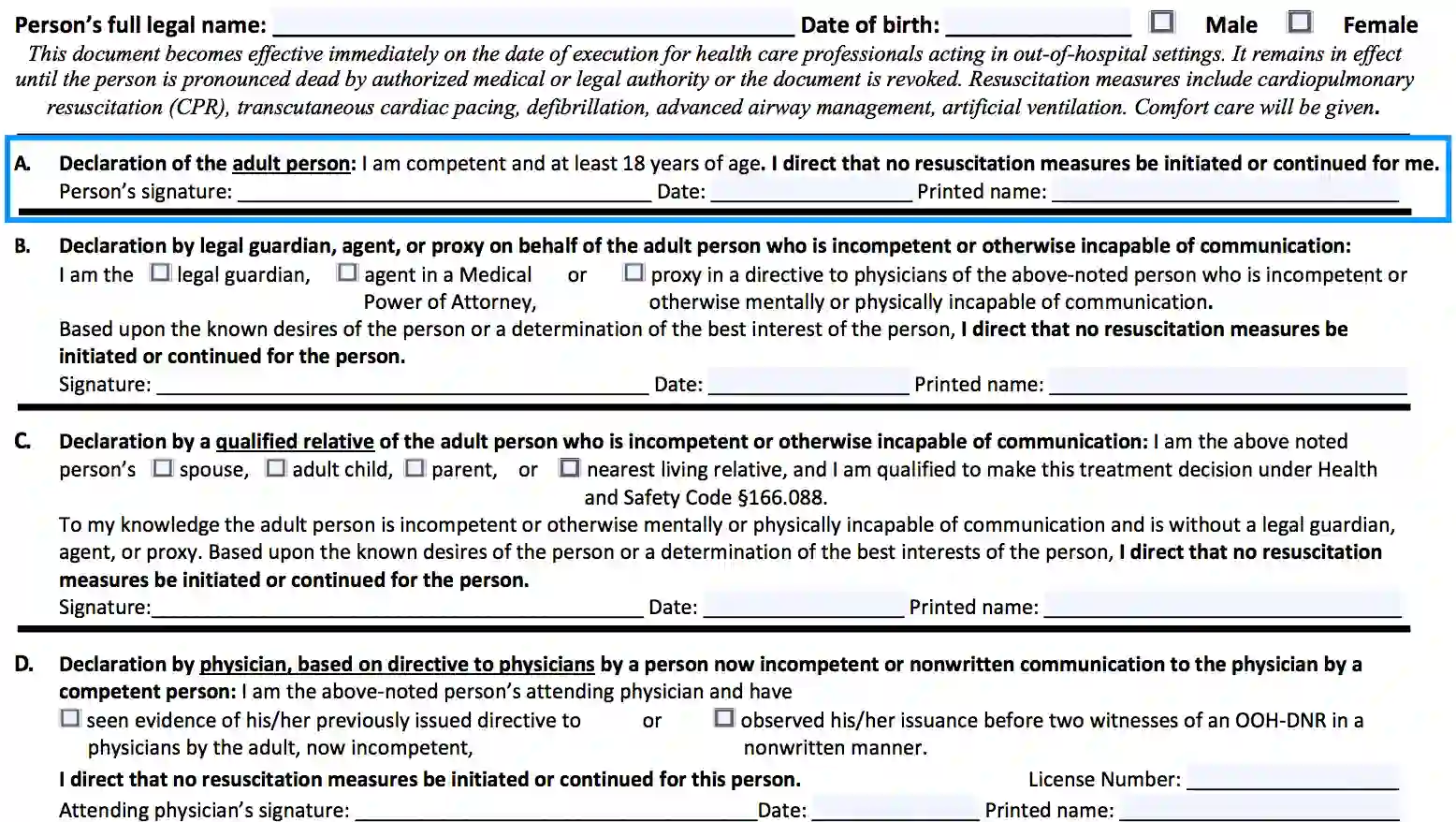
Use Section A of the document to confirm that you—as an adult patient—don’t want to receive resuscitation.
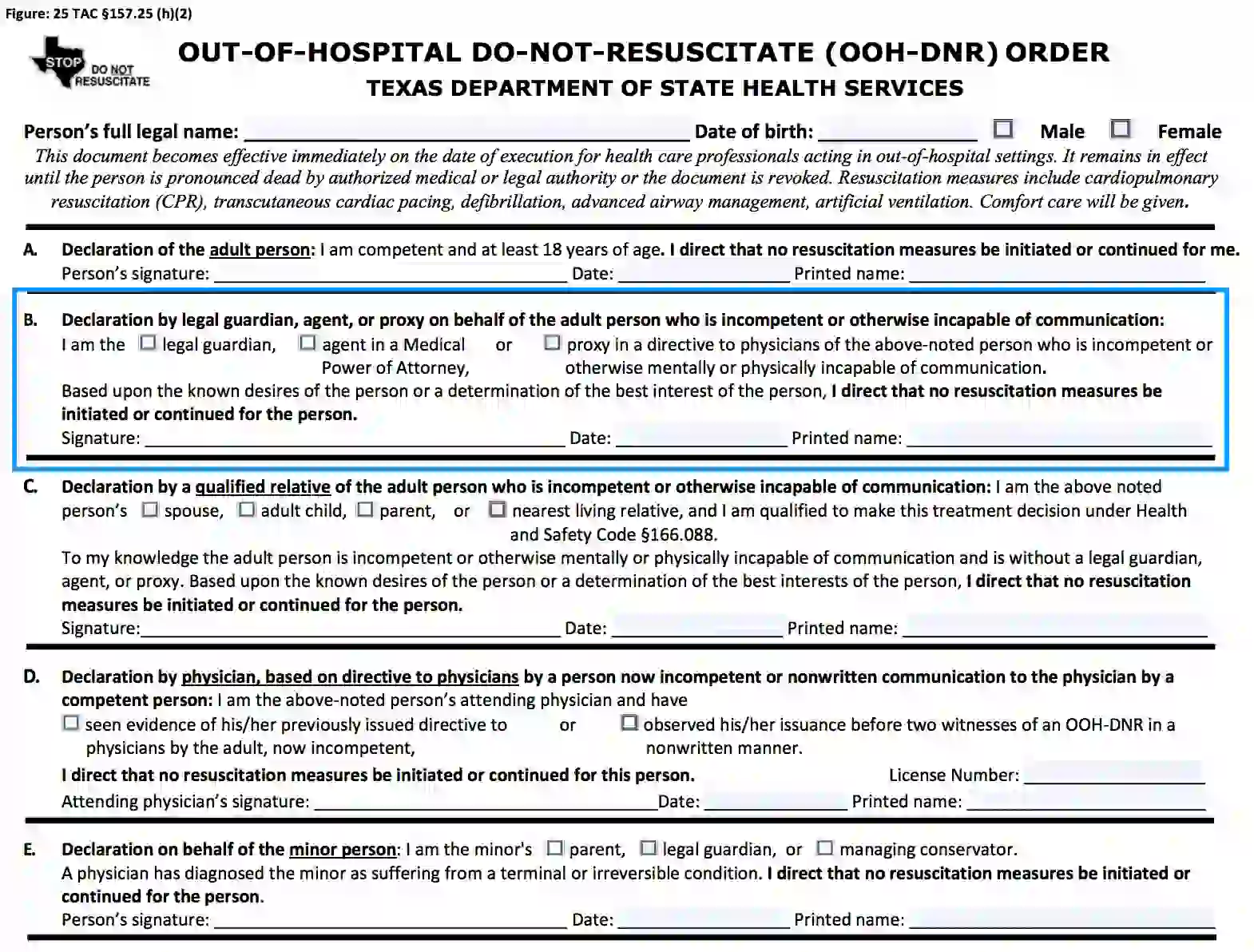
Use Section B of the document to confirm the declaration on behalf of a patient as their legal guardian, representative, etc.
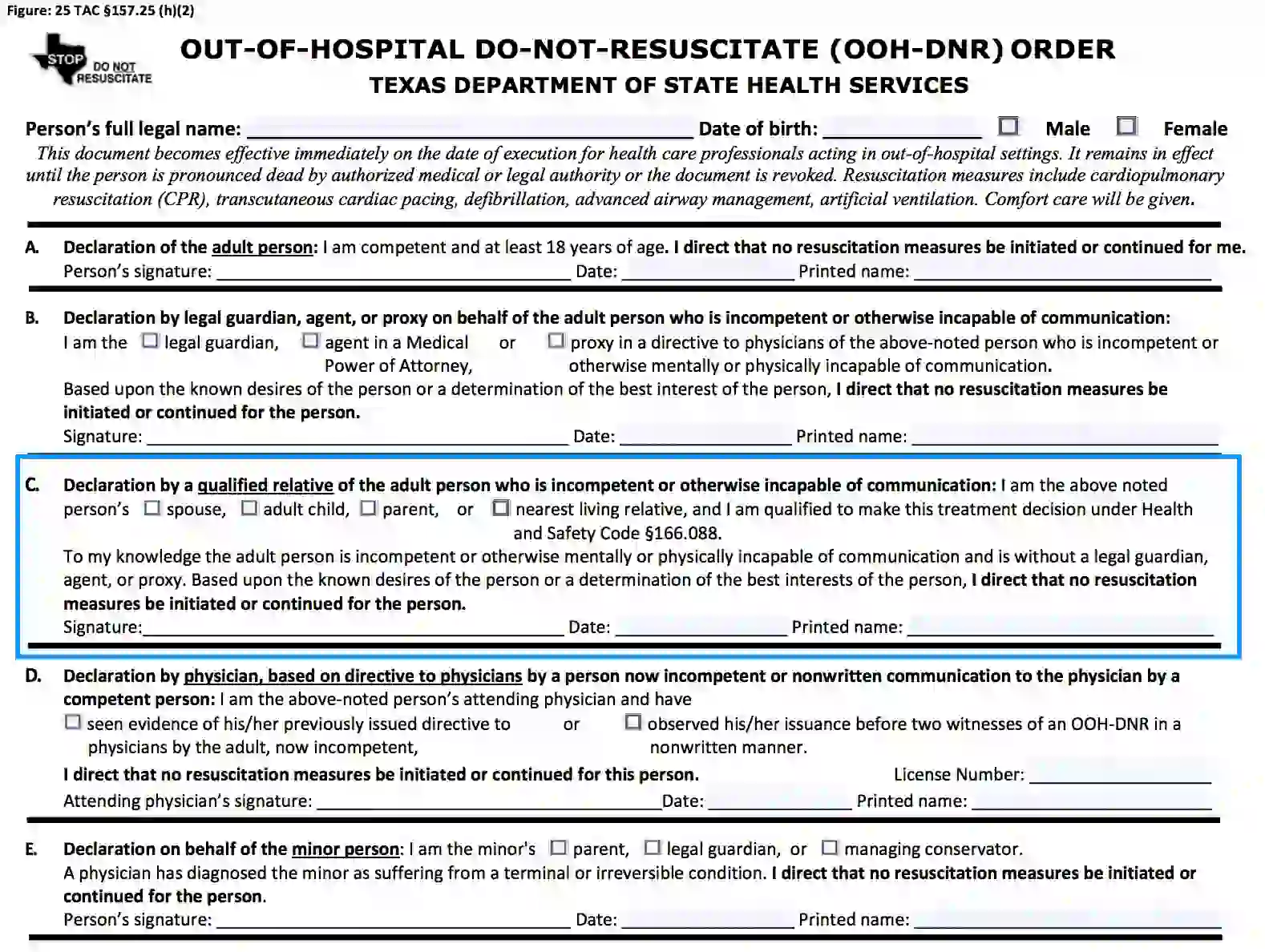
Use Section C of the document to confirm the declaration as a patient’s qualified relative.
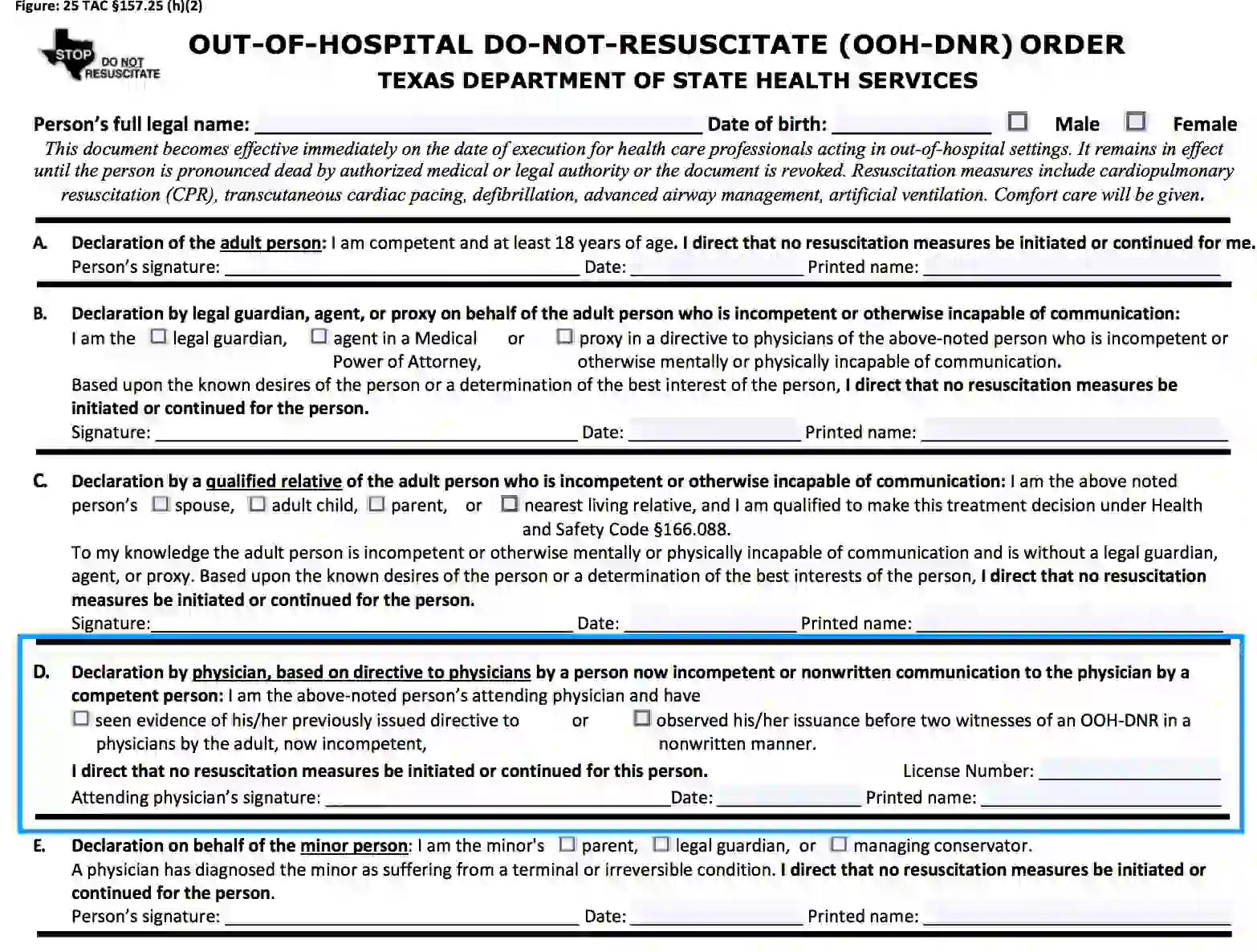
Use Section D of the document to confirm the declaration as a patient’s physician.
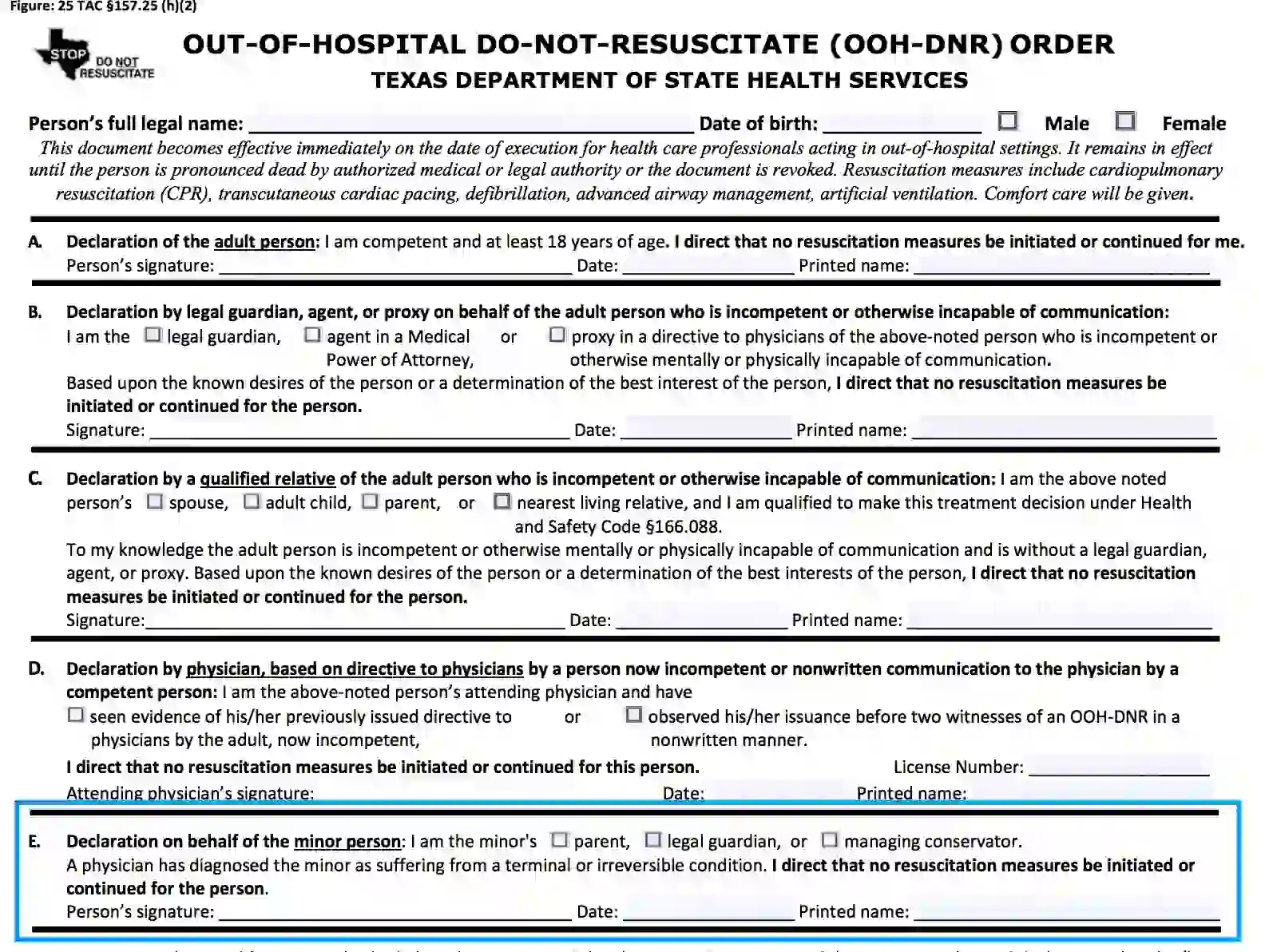
Use Section E of the document to confirm the declaration as an adult representative of a minor person.
NOTE: In each section, you will need to put down your signature, your printed name, and the date of signing.
3. Make Witnesses Sign the Document
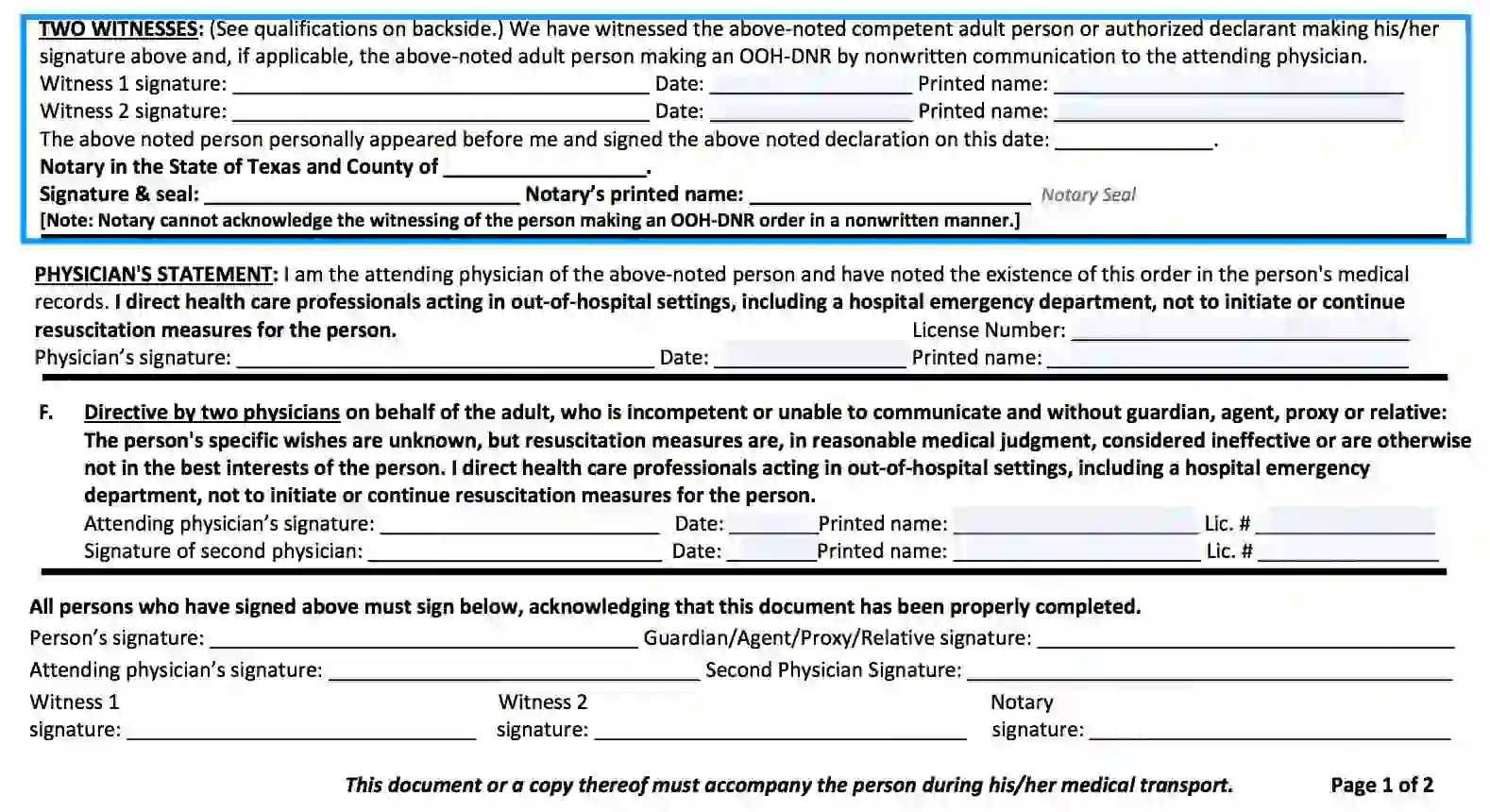
Ask two witnesses to put their signatures, the date of signing, and their printed names.
4. Provide a Physician’s Information
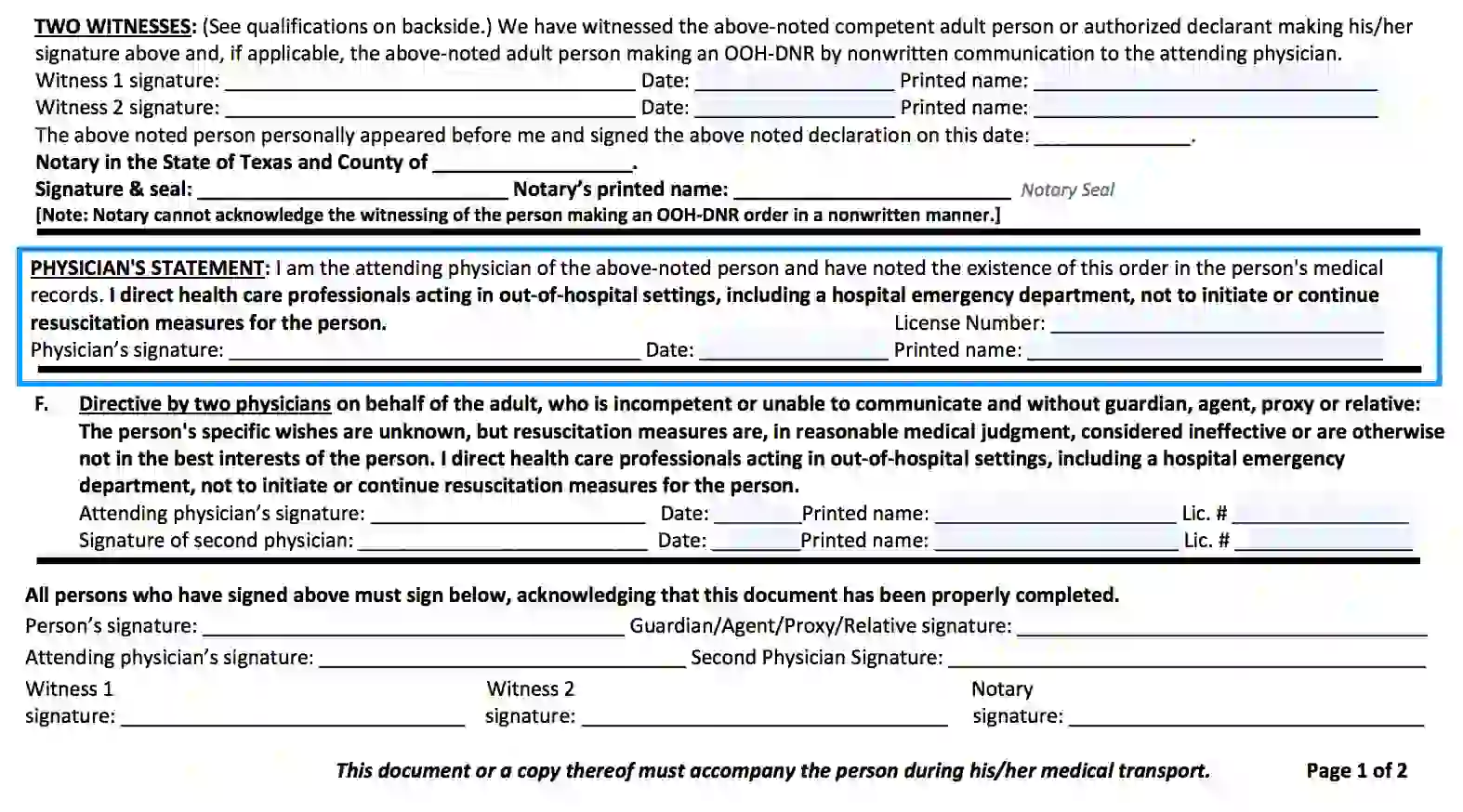
A physician must approve the form and put down their full name, license number, signature, and date of signing.

NOTE: If the patient is incompetent or unable to communicate, the participation of two physicians will be necessary.
5. Provide Signatures of All Parties Involved

This is the final step where all the participants will need to put their signatures again to make the OOH-DNR order form legal.